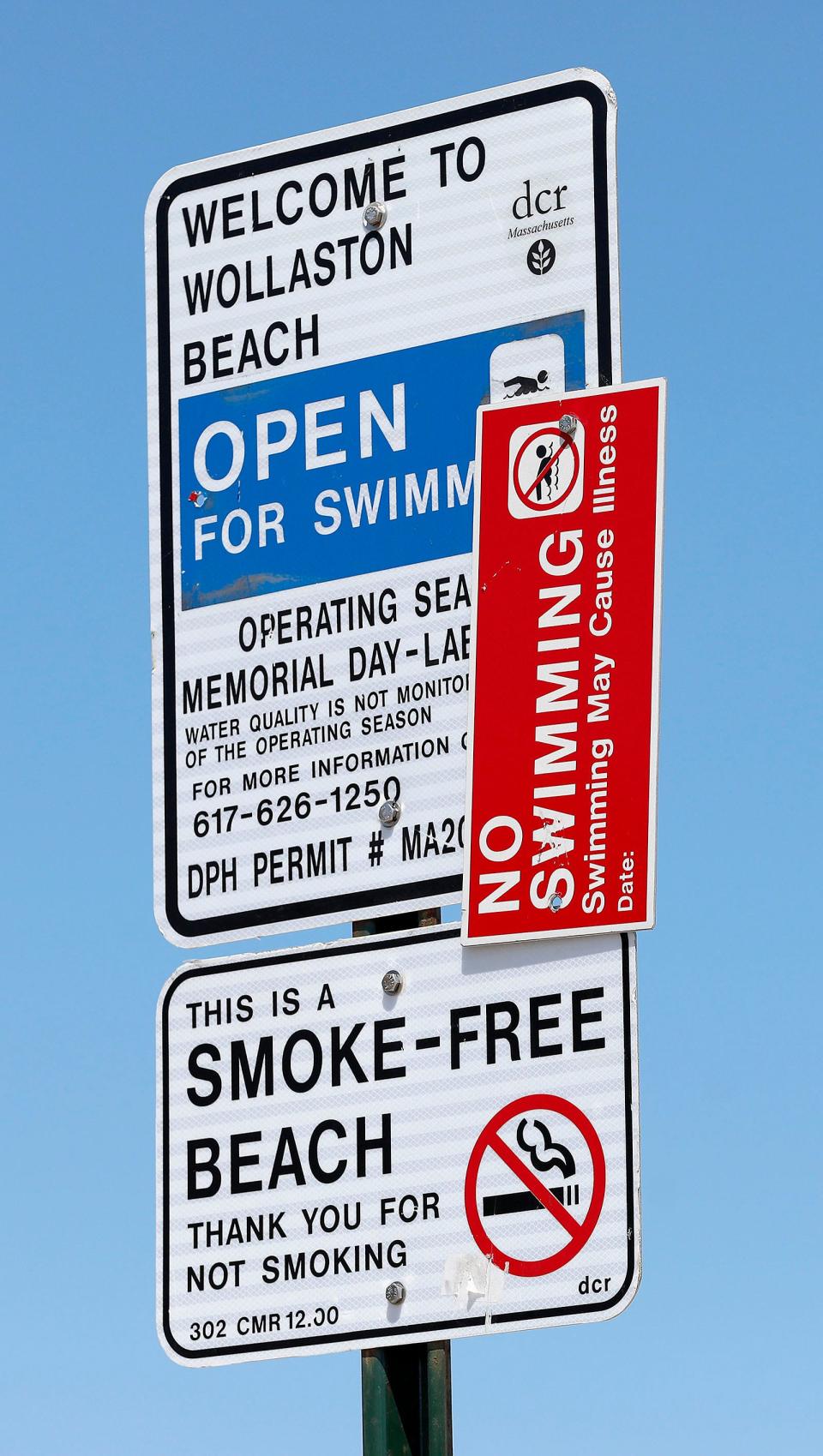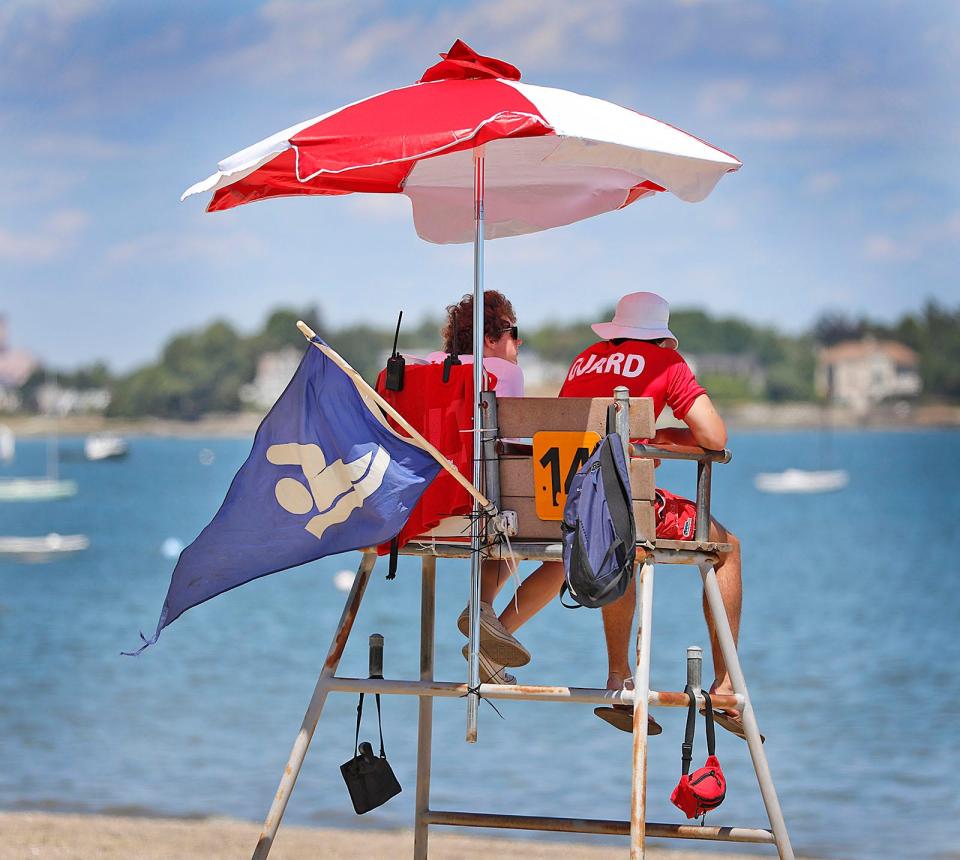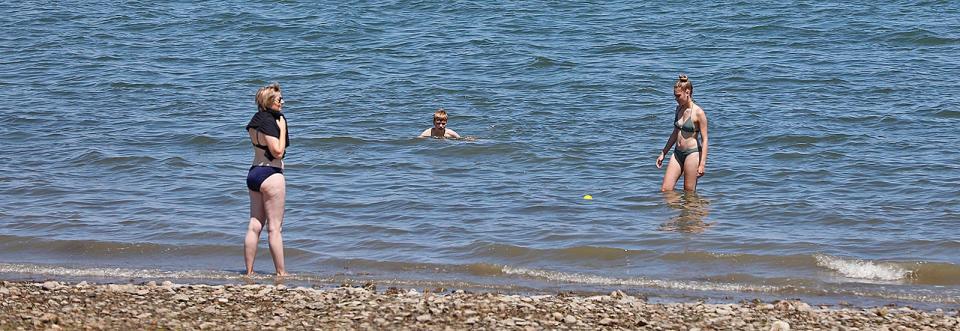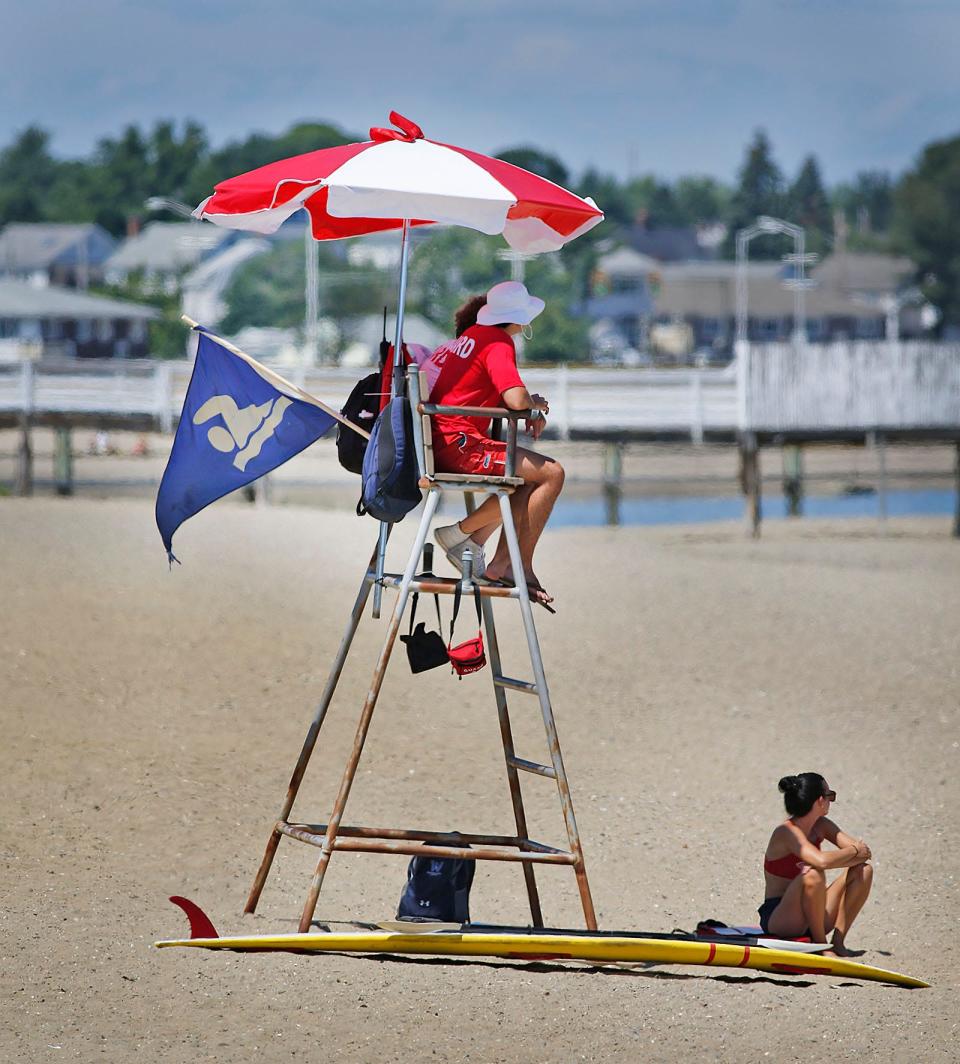Seeing red: Water quality postings at Wollaston Beach are 'fatally flawed,' nonprofit says
QUINCY – Have you ever shown up to the beach only to see a red flag waving at the entrance, warning that bacterial levels are too high to swim?
A new look at water quality postings by nonprofit Save the Harbor Save the Bay says you may have missed out on a perfectly good beach day – especially if the 2.3-mile-long beach in Wollaston is your choice. The new study suggests Wollaston Beach's water quality warnings were wrong 87% of the time in 2020, and 64% of the time last year.
“It appears as if you would be better off flipping a coin than believing a red flag on our ocean beaches,” Save the Harbor's Executive Director Chris Mancini said. “The results are not surprising, but they are very disappointing."

Who decides if the water is safe?
The Department of Public Health pays a private contractor to visit every state-run beach in the greater Boston area and collect a water sample everyday. That sample is taken to a lab, where a portion is dropped into a petri dish and allowed to sit for 24 hours. After the waiting period, a lab technician counts the number of bacteria colonies forming in the water.
If there are more than 104 units of bacteria per milliliter of water, the beach is considered to be unsafe for swimming and the lab informs the Department of Conservation and Recreation. Any beach with contaminated water gets a sign posted on the back of a lifeguard stand and a red flag, or other red sign indicating the water is not safe.
'A real loss for the community': Quincy's Good Health grocery store to close this month
'The moral high ground': Quincy mayor says he'd sue Boston over Adams book collection
The problem, according to Save the Harbor spokesman Bruce Berman, is that by the time water is tested, and the state is told the makeup of the beach water is likely entirely different than it was at the time of testing. In most instances, the water's bacteria has returned to safe levels by the time the sign goes up, and people are "robbed of a good beach day," he said.
"The current system is fatally flawed," Berman said.
Researchers with Save the Harbor, an environmental organization that has worked for decades to improve water quality at local beaches, recently conducted a study prompted by flag postings at East Boston's Constitution Beach. Berman said the organization knew that last year posts warning of high bacteria levels at Constitution Beach were wrong 75% of the time. The year before that, they were wrong every single day.

To test the flags' accuracy, Save the Harbor started also testing the water everyday. On the day warning signs were posted, most of the time, the bacteria levels were just fine, Berman said, and it was the water from the day before that was in fact unsafe.
"If you see a red flag, it means you shouldn't have been swimming yesterday. So unless you have a time machine, it's not helpful," Berman said. "On ocean beaches where water quality is effected by rain, the flags are almost always wrong ... It's misleading and out of date."
A representative from the Department of Public Health said there was no one available to be interviewed for this article.
Is Wollaston Beach safe for swimming?
Of the 15 state beaches monitored by Save the Harbor, Berman said Wollaston Beach in Quincy is one of the most susceptible to the out-of-date postings because its water quality is particularly dependent on recent rainfall.
Without rain, which leads to bacteria-ridden water rushing through local storm drains, the water at Wollaston is almost always safe for swimming. After an inch or more of rain that's not the case, but even 24 hours after rainfall the contaminants have likely filtered out into the larger ocean and dropped to safe levels.

Some beaches are so clean rainwater doesn't affect them at all. Others are so dirty that rain is just one contributing factor to already-high bacteria levels. But Wollaston falls in that sweet spot, Berman said, where testing is important but the current system "doesn't make any sense."
"At Houghton's Pond in Milton, where there isn't much turnover of the water, it's fine to have postings that are a little out of date, Berman said. "But at an ocean beach like Wollaston or Nantasket, where rainfall makes all the difference and things are constantly changing, it doesn't make any sense."
New South Shore restaurants: Square Café, Shoreline Hull, Vine Bar, La Baia, P&D and more
South Shore As It Was: With 'irresistible hospitality,' Squantum was a summer destination for Quincy's elite
So what do we do?
In the short term, Save the Harbor is calling on Health and Human Services Secretary Marylou Sudders and the Department of Public Health to better explain to residents how the water testing system works, and let them know that postings are based on 24-hour-old samples.
That information is not indicated on the state's water quality website, which is also not available to be translated into languages other than English.
"This is an environmental justice issue, in addition to being a public health issue," Berman said. "It is particularly important that people who don't have a lot of recreational options have good information about water quality."

In the long term, the organization is asking the state to do a comprehensive review of flagging accuracy on all of the beaches and consider a new system for water testing that looks at historical rainfall data.
"Before you can solve a problem, you have to admit that you have one and agree on what it is," Berman said. "But after that, you can start using common sense."
Prosecutors: South Shore men laundered money through Chinatown restaurant
The nonprofit says its decade of water quality testing and rainfall data could paint a clearer picture of when beaches are unsafe for swimming. If Wollaston Beach has almost always been unsafe the day after more than 2 inches of rain, but fine the day after that, then postings at local beaches could reflect that data.
"We'd like to look at each beach to see if we can develop a rainfall threshold or similar system to predict when the beach quality is a problem, and be able to tell people when the beach is actually unsafe, Berman said. "Historical data, plus knowing whether or not it rained in the last 24 hours, gives you a more accurate picture than the current testing system."
Thanks to our subscribers, who help make this coverage possible. If you are not a subscriber, please consider supporting quality local journalism with a Patriot Ledger subscription. Here is our latest offer.
Reach Mary Whitfill at mwhitfill@patriotledger.com.
This article originally appeared on The Patriot Ledger: Can you trust the red flags on Wollaston Beach? This nonprofit says no


